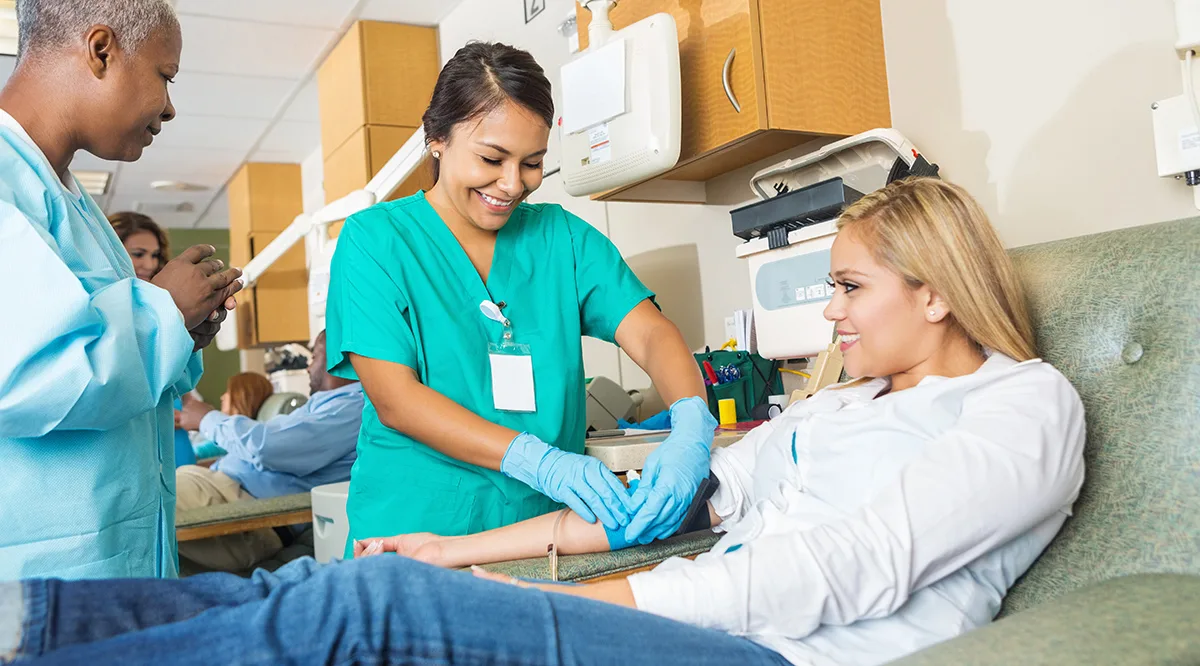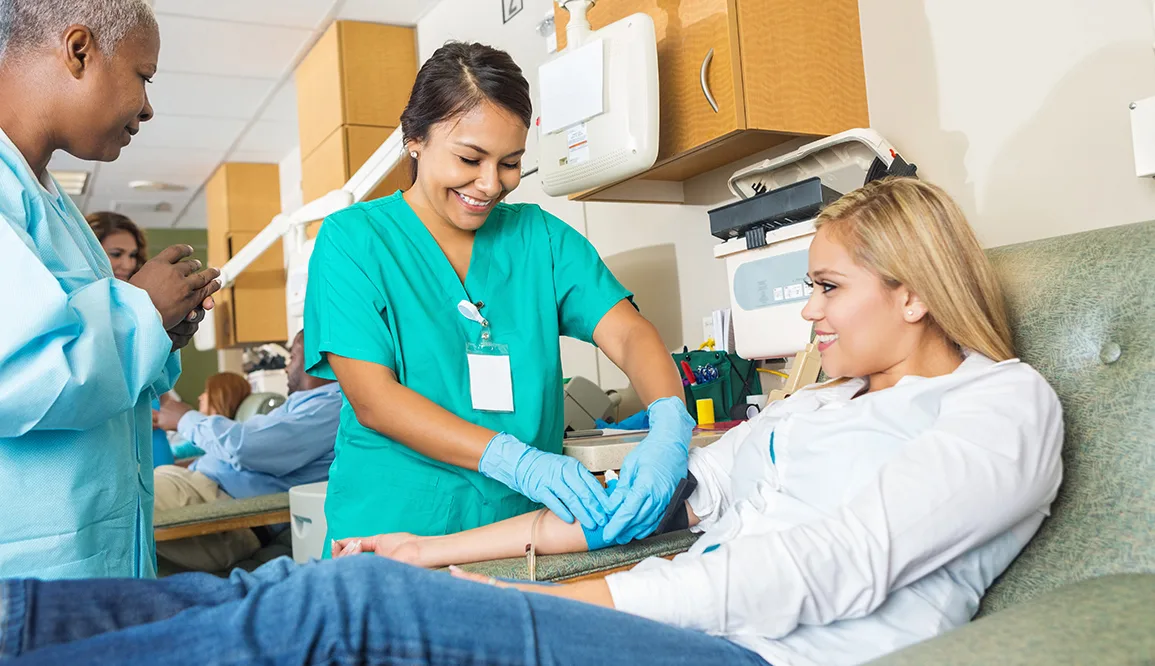
On the surface, the new Centers for Disease Control and Prevention (CDC) surveillance report on HIV trends is welcome news: New cases declined 12% between 2017 and 2021, largely due to medication prevention options like pre-exposure prophylaxis (PrEP) and post-exposure prophylaxis (PEP), particularly among young men who have sex with men (MSM).
But the news is not encouraging across all communities. In 2019, Black Americans were 13.4% of the U.S. population but accounted for nearly 40% of those living with HIV. Hispanics/Latinos make up 18.5% of the population, but 25% of those living with HIV. And Black women make up a majority of new HIV cases among all women, at 58%. These disparities hit hard among families and communities of color.
Likewise, screening for HIV has been uneven. While the rates of new HIV infections among MSM has steadily declined, this subgroup has the highest number of new cases, followed by Black heterosexual women, according to the latest CDC report. Data indicates a lifetime HIV testing rate of 92.6% for Latino gay men, 86.7% for Black gay men, and 85.1% for white gay men, but just 61.2% for Black heterosexual women.
As someone who seeks out regular care, I have never in my life been offered an HIV test by a primary care provider (PCP). My PCP has never inquired into my sexual history or the history of any partner, which could determine my eligibility for regular HIV testing. I know my HIV status because I live in one of the opt-out testing regions where HIV serology testing is automatically included in lab work, but it remains a missed opportunity for discussing sexual history and HIV prevention-based counseling. This is not good medicine. To minimize HIV rates for everyone, PCPs must prioritize equitable care for all patients by routinizing HIV testing, not just once in a lifetime, but regularly, based on sexual history.
The failure to do so vastly undercuts efforts to combat racism and health disparities. In 2020, after a summer defined by racial justice protests and the COVID-19 pandemic, the American Medical Association acknowledged the effect of racism on public health, stating that “while the primary drivers of racial health inequity are systemic and structural racism, racism and unconscious bias within medical research and health care delivery have caused and continue to cause harm to marginalized communities and society as a whole.” Those populations that have experienced these health disparities have long understood how implicit bias affects the quality of care. Studies have shown that biases influence clinicians’ treatment decisions, leading to disparities in diagnoses, treatment recommendations, and access to specialized care. Important questions regarding holistic health may be glossed over, or even skipped.
As a health disparities researcher and anti-racism educator, I am well aware of the biases inherent in the U.S. health care system. The CDC clinical HIV testing guidelines advise that clinicians offer testing based on their perceptions of a patient’s risk. This leaves room for age bias as well as bias related to marital status and socioeconomic status. As the principal investigator on a national study on disparities in HIV and COVID-19 vaccination, my aim is to eliminate HIV stigma as well as taboos related to sex. In doing so, my hope is that clinicians may feel more comfortable initiating discussions on sexual wellness, which includes HIV and PrEP/PEP screening.
Clinicians can lead the way toward equity by normalizing conversations around HIV testing and screening. In the curriculum at the George Washington University School of Medicine and Health Sciences (GW SMHS) in Washington, DC, we teach students to lead with compassion both in and out of the doctor’s office, particularly by emphasizing holistic health, including sexual wellness. We also recommend that clinicians encourage everyone to get tested annually for HIV, and implement the framework called Give-Offer-Ask-Listen-Suggest (or GOALS) to guide clinicians in discussing sexual health. For instance, clinicians give an introduction to the topic by normalizing conversations on sex and sexual health as part of primary care. Offering the HIV test is important but so is asking the patient to share their experiences with sex, including what it entails and who it is with. Practicing active listening with eye contact and reassurance is important before suggesting any next steps or a course of action.
We list the GOALS sexual-history-taking framework, among others, in the GW SMHS set of recommended changes to the current CDC guidelines on HIV testing. We also recommend:
- Expanding HIV testing beyond diagnostic testing alone to include sex-positive screening conversations to determine factors protecting or exposing patients to HIV. PCPs can play a positive role by emphasizing that overall sexual health can support our goals of increasing health equity regarding HIV cases.
- Inviting all patients to participate in these screening conversations using a universal set of questions to eliminate clinician bias and patient risk-based profiling. Revising clinical guidelines for HIV testing are a vital way to eliminate structural barriers faced by people of color.
- Annual HIV testing for all patients having sex based on their responses to the sexual history taking. We know that frequent HIV testing plays a role in reducing HIV rates by early diagnosis and referral to appropriate care and prevention services. Everyone benefits from routine testing.
- Relying on culturally responsive communication for interactions with patients in minoritized sexual, gender, racial, or ethnic groups that emphasize clinician reflection and understanding of the culture of racism alongside the culture of medicine and the culture of the patient. Last year, we launched an educational program, the Two in One: HIV + COVID screening and testing model, which educates current and future PCPs on routinizing HIV screening, along with COVID-19 vaccine screening, for all their patients by using a combined health and racial equity lens.
- Identifying metrics of patient satisfaction with a nonjudgmental and compassionate screening experience.
Despite daunting challenges, I see great hope in the next generation of clinicians. Many current medical students are keenly aware of disparities and have taken it upon themselves to become educated about the sociocultural contexts of medicine and their patients’ lived experiences. We all can have a greater impact on eliminating health disparities and improving outcomes, both inside and outside examination rooms, but it will take self-examination of personal biases alongside recognizing limited and harmful institutional and clinical practices. Guidelines recommending routine HIV testing facilitate early intervention and treatment. Part of that work is policy research. We must make that change.


